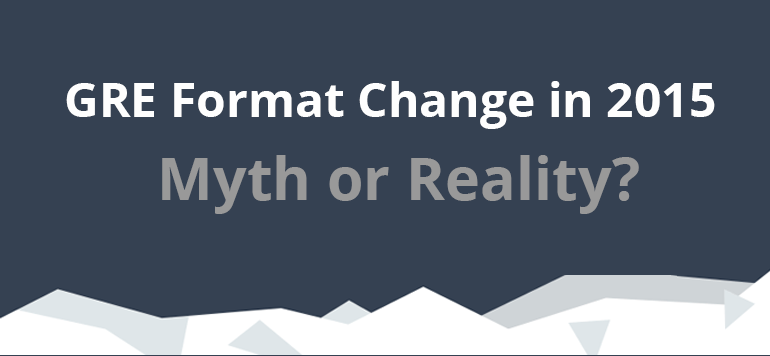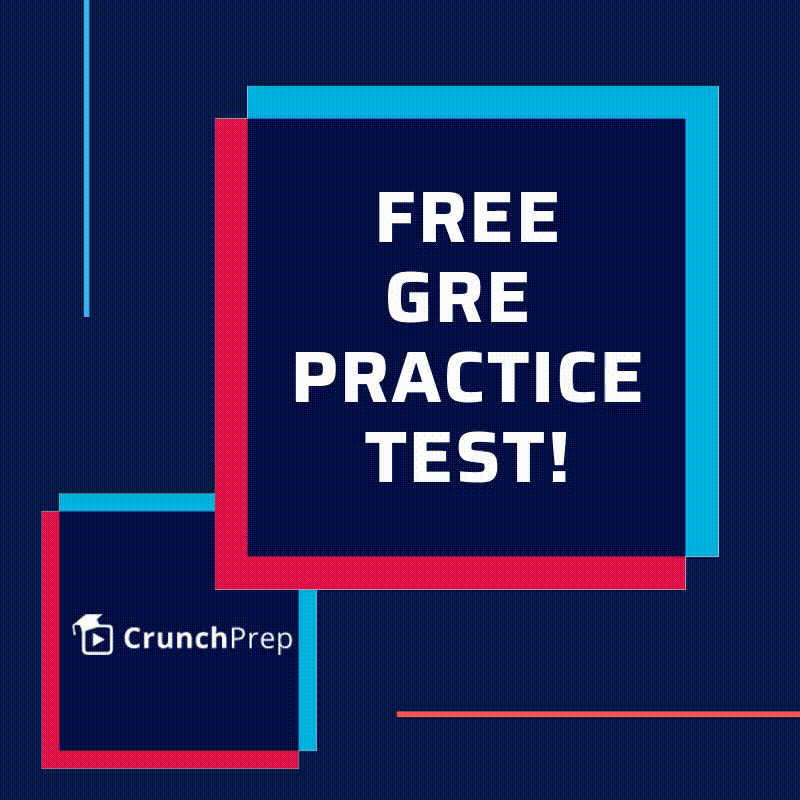The easiest way to get a great GRE quant score is to avoid making silly mistakes. It is possible that even with 2-3 mistakes, you can still get the perfect score in GRE quant. But then you should be sure to not make mistakes with the easier questions and fall for simple traps in GRE quant.
While solving the really hard questions on the GRE is already difficult, most students make simple errors and fall for common trap answer choices, which further reduces their chances of getting a good GRE quant score. 👎
It’s okay to make a mistake or two when solving the hardest questions on the test, but if you make mistakes in the first quant section itself, then you’ll surely miss the 170 mark.
Remember that the first GRE quant section will be of average difficulty level, and as such, you should ideally answer every question correctly. ✅
And the simplest way to get there is to make sure you don’t make simple mistakes that you can avoid in the first place.
10 Traps to avoid on the GRE Quant Section
Many GRE quant questions have subtle traps in them – but thankfully, you can categorize many of them because they follow specific patterns which you can identify easily.
We’ve identified the most frequent traps that you will see on the GRE test, so you can watch out for them. 👀
At the end of the day, if even one of these helped you get two questions right bumping you from a 160 score to 165+ in the quant section, it’s still a significant increase without much effort.
Remember that each of these traps is not a stand-alone, and a GRE quant question might require you to employ more than one at a time. Also note that these traps are listed in no particular order of importance.
It is also worth noting that these GRE quant tips can help if you are forced to guess, or if you want to make an intelligent guess when you’re running out of time on the test. But if you have the time, it is better to solve the question completely using conventional techniques, in order to improve your accuracy.
Having said that, here are the ten most important GRE quant traps that you should do your best to avoid.
Trap #1: The Lone Wolf Answer Choice 🐺
A lone wolf question almost always has one or more answer choices which are different when compared to the other answer choices. This is a very common trap in GRE quant.
For instance, there could be five answer choices, and four of them could be complex equations and only one of them would be a simple number.
In such cases, the lone wolf answer choice is rarely correct. It’s only included among the answer choices in order to tempt you into thinking that since it looks simple and quite different when compared to the other answer choices, it could be correct.
The correct answer usually lies among the similar looking answer choices.
Do not fall for this trap. The correct answer usually lies among the similar looking answer choices. So be careful to not be attracted by the lone wolf.
Having said that, it’s incredibly difficult to simply identify which of those could be the right answer just by looking at the choices. Often times, you will need to do the actual calculation in order to spot the answer.
But this technique helps you when you’re short on time, and you need to make an intelligent guess without checking each answer choice.
Trap #2: The Twist in the Tale 🔀
Some questions on the GRE quant section deliberately twist the required quantity in order to confuse you and trick you into selecting the wrong answer choice.
For instance, there could be a particular question where at the end of your calculation, you will get the value of x. But the question subtly asks you the square root of x, or twice of x, or the value of x combined with some other y that was given in the question itself.
And the twist is that the answer choices include those exact values, and if you’re in a hurry or are not being observant, then you’ll be tricked into selecting the wrong answer choice.
Always watch out for twists in math questions on the GRE.
This is done deliberately to check your attention to detail on the test. If you don’t read the question clearly or understand what is expected of you with respect to that particular question, then you’ll definitely select the wrong answer choice.
In order to avoid falling for such traps, always write down on the scratch paper what you need to find out, in clear, big letters. If it helps, encircle that part so you don’t lose sight of it.
Trap #3: The ‘too good to be true’ answer ☠️
If you encounter a question that you’re immediately able to identify the right answer for, then pause for a moment and check if it really is as simple as it seems, or if there is any hidden detail that you’re missing. Like the old saying goes, ‘if it’s too good to be true, then it probably is.’
Be careful to not take any question on the GRE lightly.
Far too many times, students miss minor but critical details that are right there in the question itself, because they think they know the concept or they’ve solved a similar question previously.
It’s important to understand that similar doesn’t mean same, and you should be careful to not take any question lightly.
Trap #4: The Silly Mistake 😳
A lot of times, even if the question is actually very easy to solve, students make simple errors on the test – be it calculation errors, judgmental errors, or plain misreading of the question, which hinders them from being able to solve the question correctly.
Never make silly mistakes. Math is all about precision.
Forgetting something as simple as a negative sign, or a square root, or an exponent, can lead to wrong answers. Other times, simple mathematical errors, like thinking that 18 x 5 = 80 can be very costly.
Math is all about precision, so it is important that you use your prep time to become an efficient and unerring human calculator.
Trap #5: The mis’concept’ion 🤦♀️
Sometimes, you’ll make mistakes on the test because you got the concept wrong. For instance, not knowing that 0 is an even number, or that 2 is the smallest prime number, or that 1 is not a prime number, can immediately lead to a wrong answer.
Not knowing the basic concepts can land you in trouble.
Another example would be when you get the formulae wrong for simple concepts, such as the sum of all angles in a regular polygon, or the difference in formulae for calculating interest vs. amount, etc can land you in trouble.
It is therefore very important that you get the basic concepts and formulae right before you practice questions. Create your own cheat sheet for math formulae, and refer to it on a regular basis.
Trap #6: The C of trouble 🏴☠️
Among the questions in GRE quant, quantitative comparison questions are sometimes very confusing. In such cases, you will see two answer choices that seem to be equal on first glance, which tempts you to choose C as the answer.
When you get (C) as the answer, check again to confirm if D is not a possibility.
But you need to be careful enough to see if that is really the correct answer. If you get (C) as the answer, unless you’re absolutely sure of your approach, look closely at A or B again and check if they’re really equal for all values and all conditions.
But if you have absolutely no idea at all, or if you’re really short on time and you must guess – choose D instead of C, because it’s often not the case that the given two quantities are exactly equal for all conditions and values.
Trap #7: The Must-Could Conundrum 😕
In GRE math, there is a very important distinction between the ‘must be true’ condition and the ‘could be true’ condition.
Must and Could are two very different conditions in GRE quant.
Most students do not notice this difference or ignore it, because the two conditions seem quite similar, but in fact they’re very different.
If a question asks you which of the following conditions ‘must be’ true, then you need to understand that the answer choice that you pick must always hold true for all the conditions stated in the problem.
‘Could be’ refers to that fact that the condition may not hold true for all instances, but that in certain instances, i.e. for certain numbers, the condition will be true. So, depending on what the question asks you, you should keep in mind to check if the given condition stays true for all conditions or only for some conditions. And select the answer choice based on this information.
Trap #8: The Long Winded Question ⏲️
Sometimes you’ll come across questions on the GRE quant section that are heavily worded, even though most of the question doesn’t add any value. This is especially true of word problems, and they’re not always difficult questions. Sometimes they’re pretty simple distance/time or work problems that are seemingly complicated but have simple details at their core.
Don’t waste time with the ramblers within questions.
Such questions keep rambling about unnecessary details which you are not required to know in order to solve the question and get the answer that you need to get.
But the test makers include these ramblers within the question stem in order to waste your time and confuse you into thinking that every single word in the question is important. It’s not.
It is important that you scan the question, and concert the information into simple numbers and variables and equations so that you can cut out the unnecessary part of the question, and focus on what you need to find out.
Trap #9: The New Detail 🌟
These questions are very good at tripping even the best test takers. They start innocuously, but what they ask for is subtly different from what your mind thinks you’re being asked.
A new detail or quantity is presented usually at the end or the very beginning of a question – especially word problems, data interpretation, and number properties, which suddenly shifts the direction of your thought.
Watch out for twists within the question stem.
For instance, you may see a question like the following:
In 2006, Company X revenue grew 18% from $200,000, company Y revenue grew 30% from $90,000 – at the end of 2006, how much more would X earn than Y if X grew 20%.”
This question is a twister because it gave you a new percentage at the end. Your mind would be inclined to calculate the 30% growth rate for Y, but then you’re suddenly bombarded with a new detail, so you’ll have to recalibrate again.
But if you think about it, this question is also long-winded, or a rambler, because 18% growth rate for X is actually useless information given the context of the question. Because the question is twisted at the end asking and you’re asked that doesn’t require you to use this 18% figure.
Actual questions on the GRE math section can be even more subtle than this – something like, instead of asking, “by how much did X exceed Y”, it might say “by how much does twice of X exceed thrice of B”? See how twisted it can get? So, always be sure to read your question ends carefully.
Trap #10: The Zero-One Problem 🔟
Sometimes, when you’re doing seemingly simple calculations, it’s easy to forget to check for 0 and 1. This is especially relevant in Quantitative Comparison questions, where when comparing between two quantities, it is important to check what happens to the comparison when you substitute 0 and 1 in the given equations.
Make sure to check conditions for 0 and 1.
Always make sure to plug in 0 and 1 if the constraints permit doing so. Oftentimes plugging in a 0 or 1 will prove the exception, thus making the answer (D), instead of (A) or (B).
By extension, if the question allows for it, you should also check the conditions for negative values. Sometimes when you include negative values in the equation, then the entire relationship reverses.
So those are the top ten most important traps that you should definitely avoid if you’re aiming for a 170 score in GRE quant.
Now It’s Your Turn
So those are some of the most common trap answer choices in GRE quant. If you’re able to identify these traps when you’re solving math questions, you can easily avoid making mistakes.
If you know of any other trap answer choice that you have encountered during your GRE prep, or if you have any tips to avoid silly mistakes in GRE quant, let us know in the comments, and we’ll share them with everyone else.
But if you’re still studying for the GRE, and you need help with your prep, then we at CrunchPrep are here to answer any questions you may have. We’ve helped hundreds of our students score 170 In the quant section, and we can help you get the top score as well. Reach out to us if you would like us to assist you with your GRE prep. 🙂









